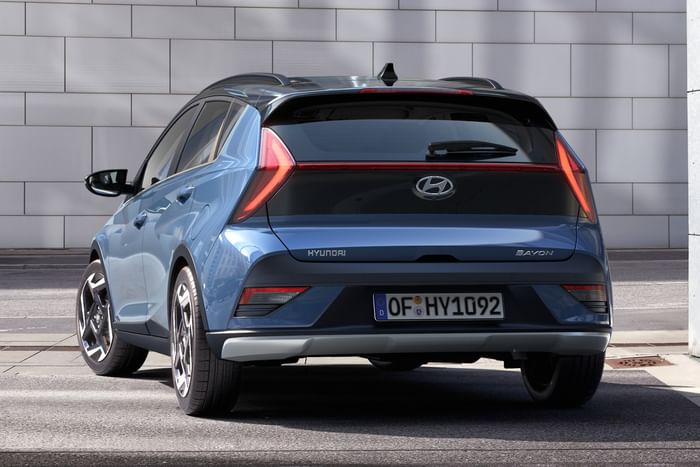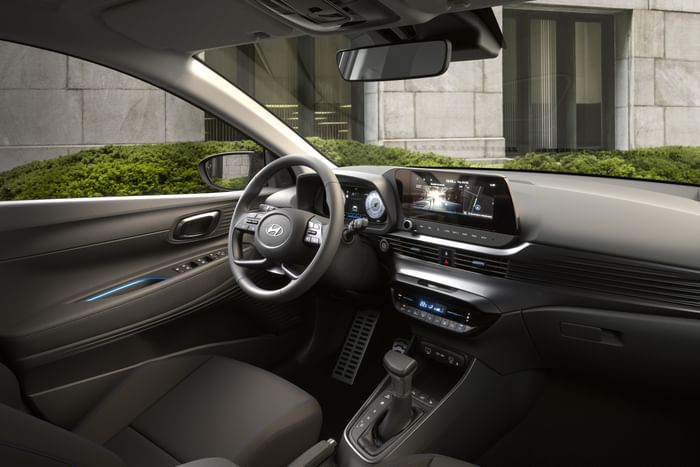Hyundai is planning to bring the Bayon compact SUV to India next year, and it’s expected to be powered by a brand-new 1.2-litre 4-cylinder turbo-petrol engine, Autocar India can exclusively confirm. As we reported last year, the Bayon is a global model that’s built on the same platform as the i20, and will serve as Hyundai’s rival to the popular Maruti Suzuki Fronx in India when it launches here in mid-2026.
- Upcoming Hyundai Bayon to utilise brand-new 1.2-litre turbo-petrol engine
- Hyundai will build the engine in India; it will be hybrid-ready and stronger than 1.0 turbo
- The Bayon may offer both the 1.2-litre and 1.0-litre turbo-petrol powertrains
Hyundai Bayon engine and gearbox
New Hyundai 1.2-litre engine to slot in between carmaker’s current turbo motors
Earlier today, we broke the news of Hyundai developing a new locally-built 1.2-litre turbo-petrol engine for the Indian market, which will slot in between the Korean carmaker’s current 1.0-litre turbo-petrol (used in the Venue and i20) and the 1.5-litre turbo-petrol (used in the Creta, Verna, and Alcazar) units.
This 1.2-litre turbo-petrol engine will offer greater torque and drivability than the 1.0-litre unit (120hp, 172Nm), whilst being more compact and fuel-efficient than the 1.5-litre motor (160hp, 253Nm). It’s also being engineered to be hybrid-ready, and so will likely be crucial to Hyundai’s future hybrid powertrains. As it stands, the transmission options for the 1.2-litre turbo-petrol engine could include a dual-clutch automatic or an e-CVT, depending upon the use case.
Bayon could get both 1.2-litre and 1.0-litre turbo-petrol engines
According to our sources, the new engine is expected to power the 2026-bound Hyundai Bayon, as well as future iterations of the i20, Venue, and other models that fall in the Rs 15-20 lakh price bracket. Hyundai is gearing up to launch the next-gen Venue in October 2025, so it remains to be seen if the 1.2-litre turbo-petrol engine debuts with the compact SUV. The Bayon is available with the 1.0-litre turbo-petrol engine with a 6-speed manual and 7-speed DCT in overseas markets, so these powertrains may be offered in the India-spec version as well.
Hyundai Bayon exterior design
Sleek and futuristic styling

Up front, the Bayon’s styling closely resembles that of the Verna, thanks to a split-headlight setup comprising an LED strip on the bonnet and angular main units underneath. There’s also a wide honeycomb-patterned air dam, with silver trim and black plastic cladding that wraps all around the body.
Over to the side, the Bayon gets 17-inch diamond-cut alloy wheels and several cuts and creases, and at the rear, the compact SUV has a blacked-out section housing rakish boomerang-shaped tail-lamps connected by an LED strip, with indicators, black cladding, and silver trim on the bumper.
Hyundai Bayon interior and features
10.25-inch infotainment screen, Bose sound system, and more

The Bayon’s all-black cabin shares a lot of components with Hyundai models, such as the familiar four-spoke steering wheel, 10.25-inch infotainment touchscreen, 10.25-inch digital driver’s display, HVAC control panel, etc. Other creature comforts include wireless charging, connected car tech, over-the-air (OTA) updates, fast-charging USB Type-C ports, ambient lighting, ADAS, an 8-speaker Bose sound system, and more. The Bayon also gets a 411-litre boot.
Also see:
Hyundai India’s 26 product launch onslaught by 2030 decoded
New Hyundai Verna SX+ trim launched at Rs 13.79 lakh

